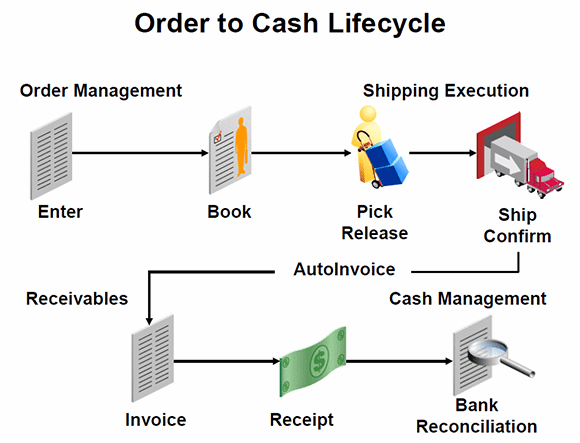What is IT's role in the order to cash cycle?
The order to cash cycle is an important business process with numerous steps. It's vital for IT to know the system and choose the right software.
With numerous applications that must be implemented and interconnected, the order to cash cycle is an important function of IT. Moreover, as orders are about customers, and customers are the lifeblood of the corporation, it is imperative that these interconnected applications work well. A successful order to cash cycle will please the CFO, since cash is the desired outcome of the cycle.
To illustrate how the order to cash cycle works, an earth-moving equipment company (competing with Caterpillar or International Harvester) will be the example. Here are some descriptions about how the company sells product:
- Make to stock: The equipment is available from inventory
- Make to order: Standard equipment, but only manufactured when there is an order
- Assemble to order: The equipment is assembled on demand from components in different areas
- Engineer to order: This is a one-of-a-kind piece of equipment.
An order for equipment can come from a dealer or an end customer. Some orders can be promised right away; others will require forecasts. The order can also be for spare parts and maintenance agreements.

Steps in the order to cash cycle
As you can see in the graphic, there are numerous steps in the order to cash cycle. The following are descriptions of some of these steps.
Order entry. Wherever possible, there should be a portal where the customer can enter orders, have orders confirmed, check shipping status, manage payments, and so forth. This portal will have numerous uses in the order to cash cycle, all of which support a higher level of customer intimacy.
Next, a salesperson confirms and prices the order. The sales department owns the relationship with the customer. The salesperson places the confirmed order into the system, where it must be approved by the customer.
Credit check. The accounting department must validate that the customer is creditworthy.
Manufacturing fulfillment. The manufacturing department must determine how to fulfill this order. Are the items in inventory (but not already committed to another customer)? If not, what will it take to make these items and what parts are needed? The manufacturing team must return an "available to promise" date -- i.e., when the items will be ready to ship. Few things are more injurious to customer intimacy than blowing a production promise.
Shipping. The shipping department must make a commitment to the customer. Once we know when the customer's order is ready to be shipped, the shipping department may commit its own shipping resources or a third-party resource.
Notify the customer. With all this information in hand, the customer can be notified as to what will be delivered, where it will be delivered, when it will be delivered, and so forth.
Delivery confirmation. Fast-forward now to the equipment being received by the customer. Using the same customer portal, we ask the customer to acknowledge receipt of the goods and see whether there's anything wrong with the order. It is understood that it may take some time for the customer to inspect the machinery delivered.
Invoice the customer. An invoice for the customer must be created to track the order and cash owed.
Return and dispute management. If the customer has an issue with the quantity or quality of goods received, the salesperson will get involved again to deal with this conflict. It must be determined what is wrong, where to return the goods and how to resolve the issues.
Payment. The customer pays for the goods and services supplied by the company.
IT's role in the order to cash cycle
With so many aspects to the order to cash cycle, there is a great deal of opportunity for IT to add value. The first step is software selection.
IT has a key role in software selection and integration. The required software may be sourced from enterprise resource planning (ERP) vendors (e.g., SAP, Oracle, Epicor and Syspro), although many companies deploy best-in-class products in areas like shipping and returns management. Additionally, the IT department may work toward building custom solutions. For custom development, IT may wish to deploy tools to help model and run business processes. Ultimately, through software, middleware and other connective tools (e.g., document management, workflow, portals), the order to cash process must operate seamlessly across disparate applications.
More on the order to cash cycle
Definition of order to cash
Cloud-based enterprise resource planning
Applications must be implemented and interconnected, which leads to an analytical layer for reports, graphs, dashboards and the like. Because of the critical nature of this cycle, IT should also consider using a professional services firm, such as IBM Global Services or Deloitte.
All these components need to come together with data warehousing and analytics. The IT department must describe key data (metadata), build data warehouses and data marts, and then provide an overriding business Intelligence layer for reporting and dashboards. Management will need to measure such things as customer satisfaction, customer profitability, product profitability, and customer retention and attrition.
If an ERP system is deployed, select a consulting firm that is grounded in the company's ERP system and ensure that the consulting firm is experienced in extending the order to cash cycle within ERP.








